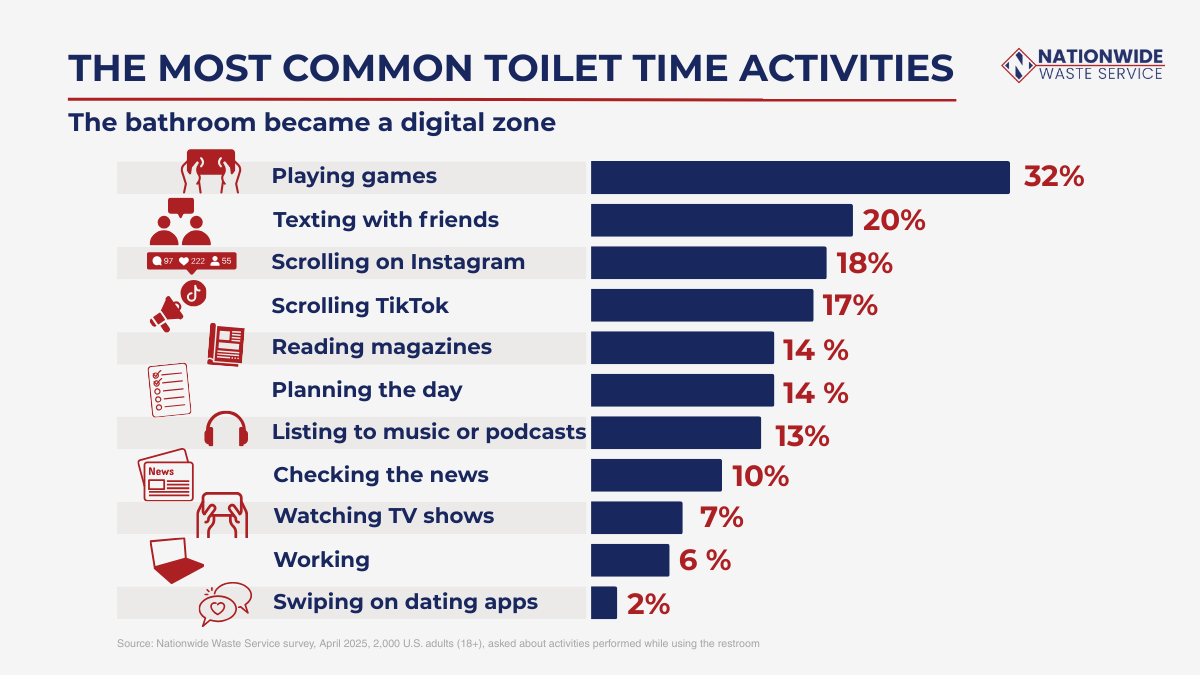Toilet Time Is Screen Time
The Great Bathroom Survey, published by Nationwide Waste Service, polled 2,000 Americans and uncovered that the toilet has become a screen-time sanctuary.
Most people spend only a few minutes doing their business: 37% said it takes 5 minutes or longer. But the survey revealed that for many Americans, bathroom breaks quietly become moments of digital escape. While most respondents report spending only a few minutes in the restroom, those brief windows are spent scrolling, messaging, or gaming.
According to the results, 32% of Americans play mobile games while on the toilet, while 20% message friends. Social media use is also widespread: 18% use Instagram, and 17% browse TikTok while doing their business.
Many also tune in to music or podcasts (13%), catch up on the news (10%), or even watch TV shows (7%). A smaller share said they’re working from the stall (6%).

While 35% of respondents claimed they “don’t do anything” while on the toilet, the broader picture suggests otherwise the study found, especially for younger generations. Among Gen Z, nearly half said they play games or use TikTok during restroom breaks, proving that even short breaks are now part of their online routine.
And while the numbers are small, 2% of Americans admit to using dating apps on the toilet, with men significantly more likely than women to do so. In San Antonio, Texas, men reported the nation’s highest rate of swiping while sitting.
For the full results of the Great Bathroom Survey, including insights into the psychology of bathroom shame and why men peeing standing up, click here.


